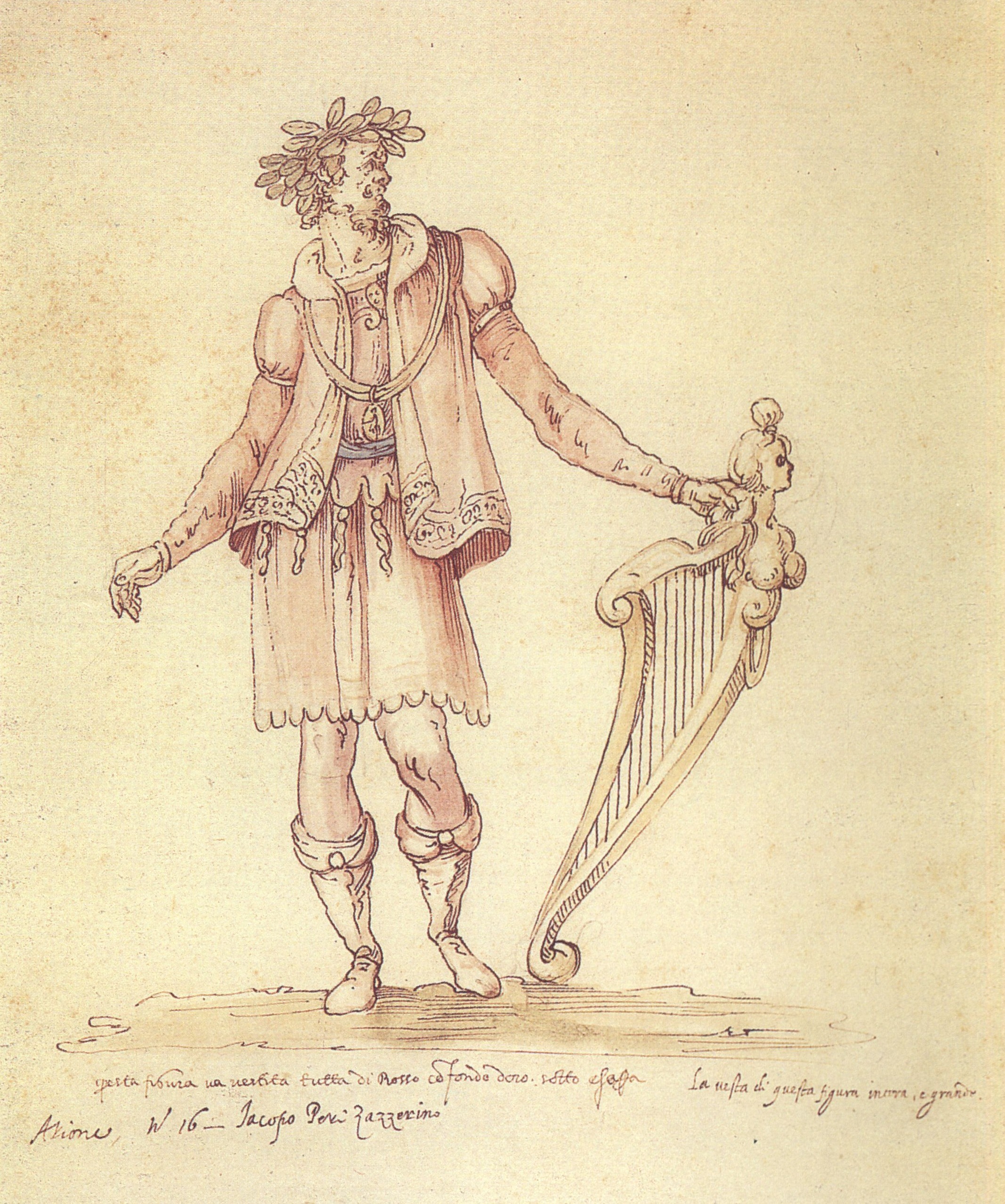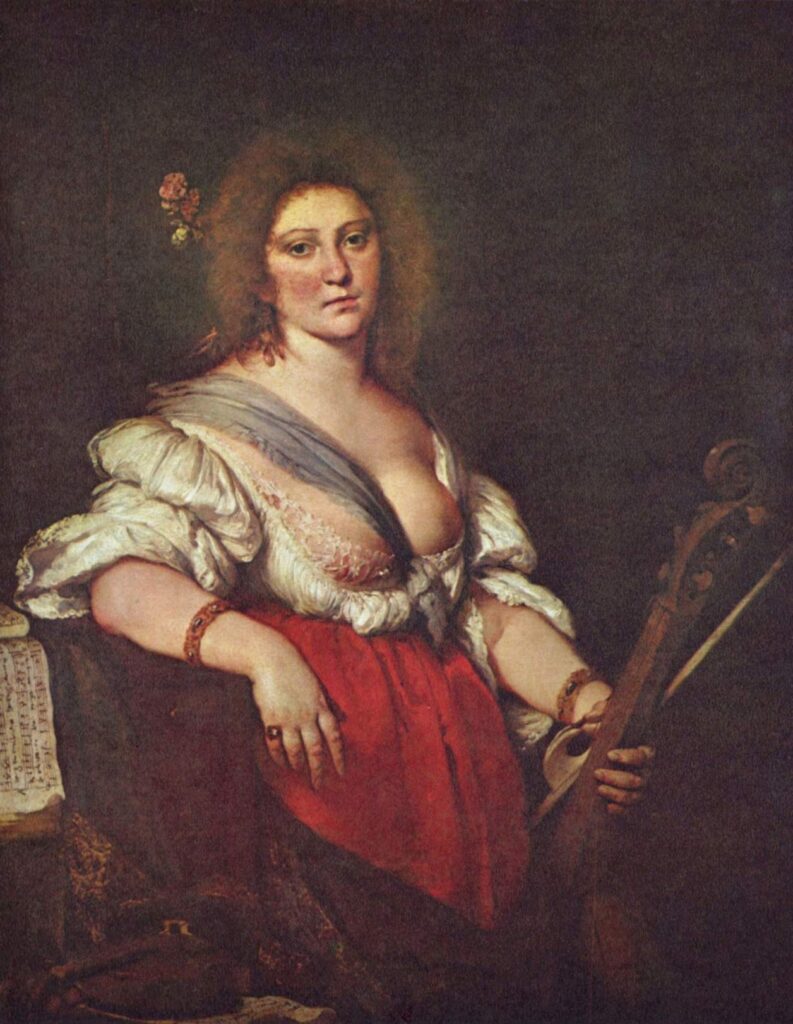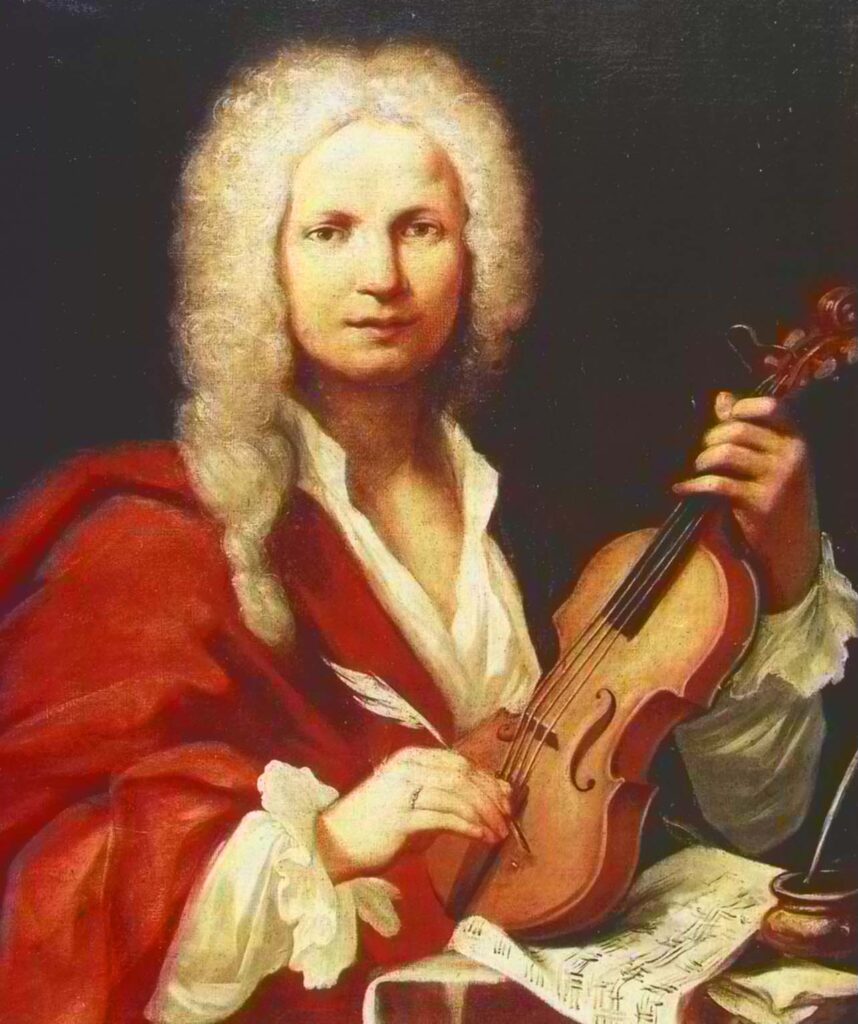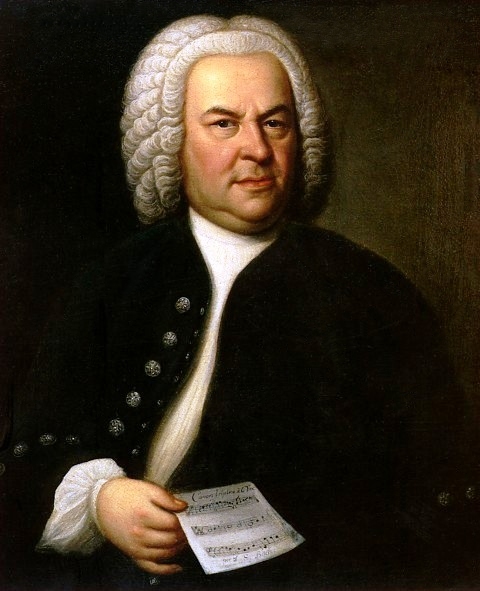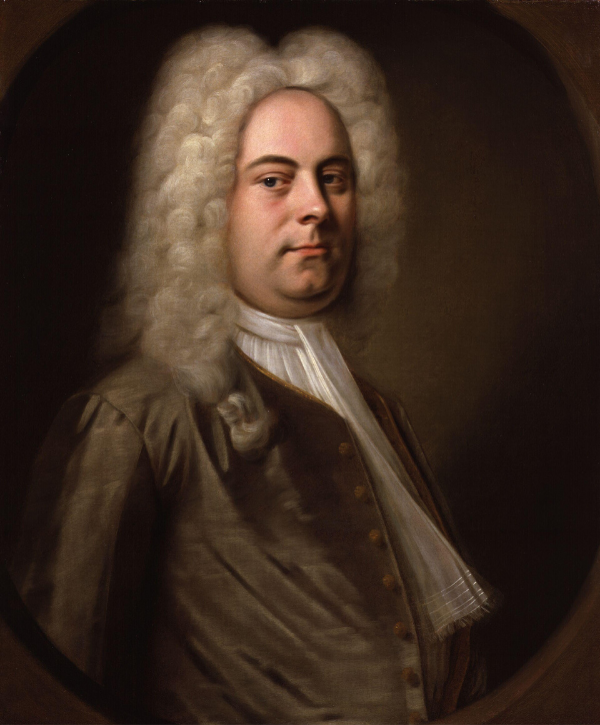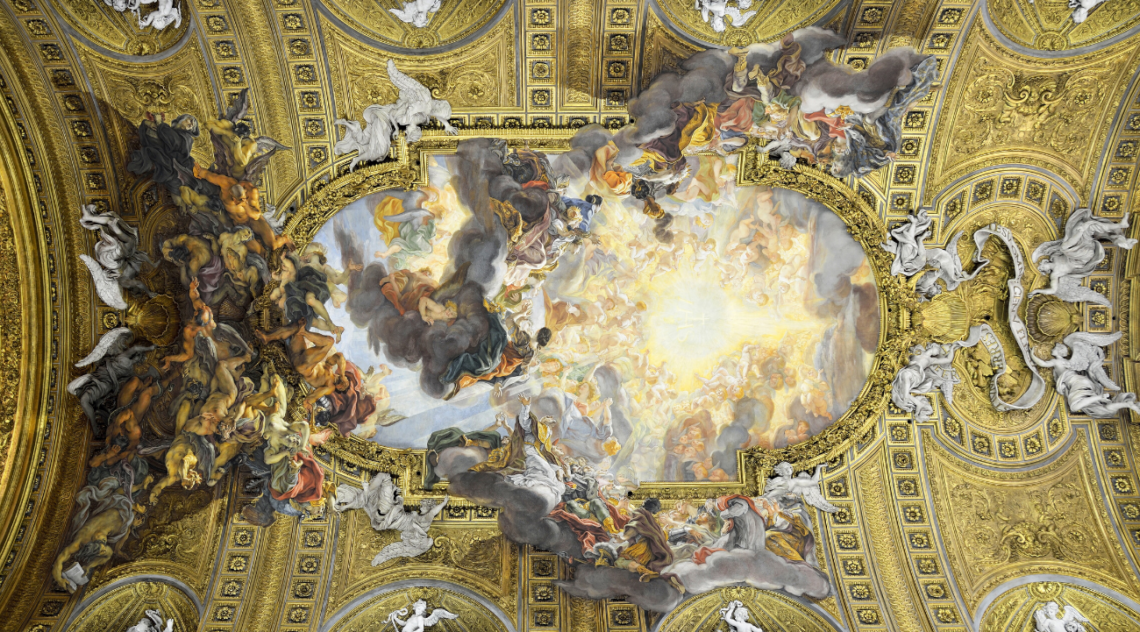
What is Baroque Music? And what is “Early Music”?
Image: Giovanni Battista Gaulli, Triumph of the Name of Jesus, 1661–79, fresco on stucco, ceiling of Chiesa del Gesù (Rome), photograph by LivioAndronico; license here
Baroque Music
The easiest way to describe Baroque music is it give it a time frame: it was classical music (more specifically “Western” classical music, meaning from Europe rather than Asia) composed between approximately 1600 and 1750.
But Baroque music is so much more than that. It saw the birth of instruments and musical styles, lived through wars and famous kings. It also saw a lot of change: 150 years is a long time.
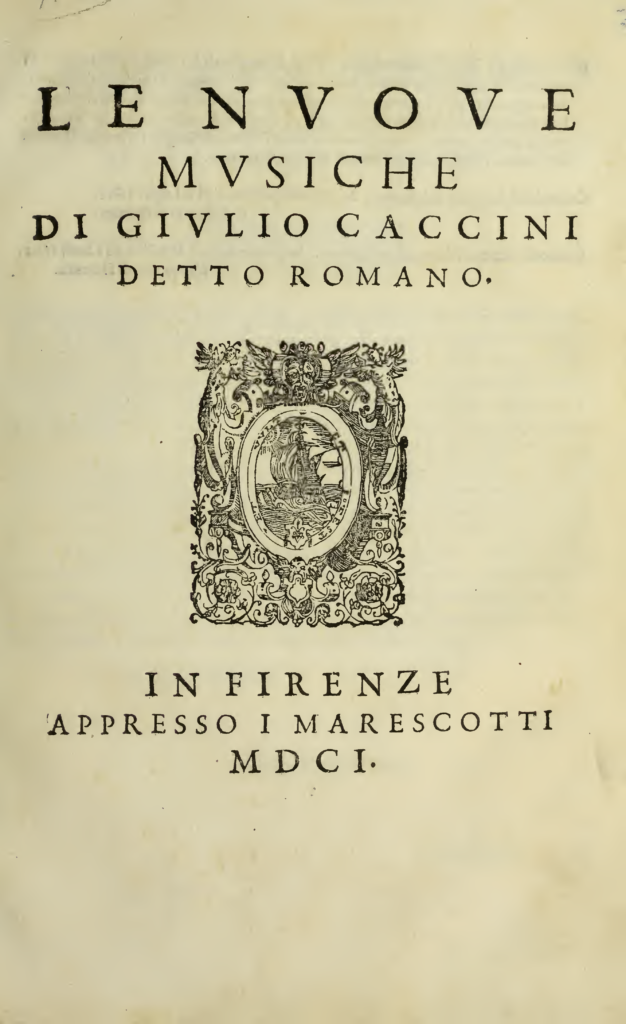
The Beginning of Baroque Music
At the beginning of the Baroque period we find composers like Claudio Monteverdi (1567–1643), Giulio Caccini (1551–1618), and Jacopo Peri (1561–1633). They helped move music from what was called the “prima pratica,” or “first practice” (i.e. the “old” music), to the “seconda pratica,” or “second practice” (i.e. the “new” music). They mostly did this by inventing the new genres of monody and opera.
Though you may not know the word, you’re already familiar with the concept of monody: a solo singer with accompaniment. (The “mono” part means “one.”) In the Baroque period, this accompaniment was basso continuo, which I’ll explain shortly.
Though you may not have known about monody, you probably do have a general idea of what opera is–it’s similar to a play, with a plot that is acted out, but is sung rather than spoken. Both opera and monody were invented right around the year 1600, which is why we consider that the start of the Baroque period.

Basso Continuo
Another musical invention that happened right around 1600 was basso continuo.
Basso continuo is where an instrument that can play three or more notes at one time (in this context called a “chordal” instrument), such as a harpsichord or organ, is (usually) joined by one or more low-sounding instruments that play only one note at a time, like a cello or bassoon. They both read from a bass line, which in this case is a single line of music that is the lowest-sounding part of the musical composition, and the chordal instrument improvises chords over the bass line based on numbers written in the part, called “figures.”
If you want to find out more about basso continuo, check out my blog post on the subject.
Basso continuo was incredibly important in the Baroque period and was part of almost every single Baroque piece. It’s one of the defining elements of Baroque music that lasted throughout the whole era.
The Early Baroque and the Late Baroque
The Baroque period can be subdivided into the early and late Baroque. The early Baroque lasted from approximately 1600–1700 and the late Baroque–also called the “high Baroque”–was roughly from 1700–1750. (There are also some who divide the Baroque into early, middle, and late, with dates such as 1580–1630, 1630–1680, and 1680–1750, respectively.)
Early Baroque
In addition to Monteverdi, Caccini, and Peri, the early Baroque also included composers such as Girolamo Frescobaldi (1583–1643), Heinrich Schütz (1585–1672), Barbara Strozzi (1619–1677), Jean-Baptiste Lully (1632–1687), and Henry Purcell (c1659–1695). (Lully and Purcell are considered middle Baroque under the three-part system.) They all wrote music for various combinations of instruments and voices, each with its own unique sound and national flavor (Frescobaldi and Strozzi were Italian, Schütz was German, Lully was French, and Purcell was English).
Throughout the Baroque, music from different countries had different characteristics, with Italian and French music having the two most distinct styles. Italian Baroque music was often virtuosic–i.e. flashy and difficult to play–and full of unexpected harmonies (i.e. combinations of notes that might sound intentionally “wrong”), while French music tended to be more refined and graceful.
Late Baroque
By the late Baroque there was great interest in trying to “reunite” the different musical styles from different countries. Late Baroque composers, such as François Couperin (1668–1733), Antonio Vivaldi (1678–1741), Jean-Philippe Rameau (1683–1764), Johann Sebastian Bach (1685–1750), George Frideric Handel (1685–1759), and Domenico Scarlatti (1685–1757), were often interested in combining elements of different national styles or writing pieces in styles from counties other than their own.
Late Baroque composers were also often interested in highly contrapuntal textures–i.e. music with several “singable” lines rather than musical lines that jump around a lot or are not continuous. The music of the late Baroque was also often very complex and had rich harmonies and defined formal structures.
The Baroque period came to a close and moved on to the Classical era when musical textures emphasizing melody and accompaniment rather than counterpoint again became popular. This began to happen in the 1730s, but the end of the Baroque period is generally set at 1750 because that is the year in which Johann Sebastian Bach died.
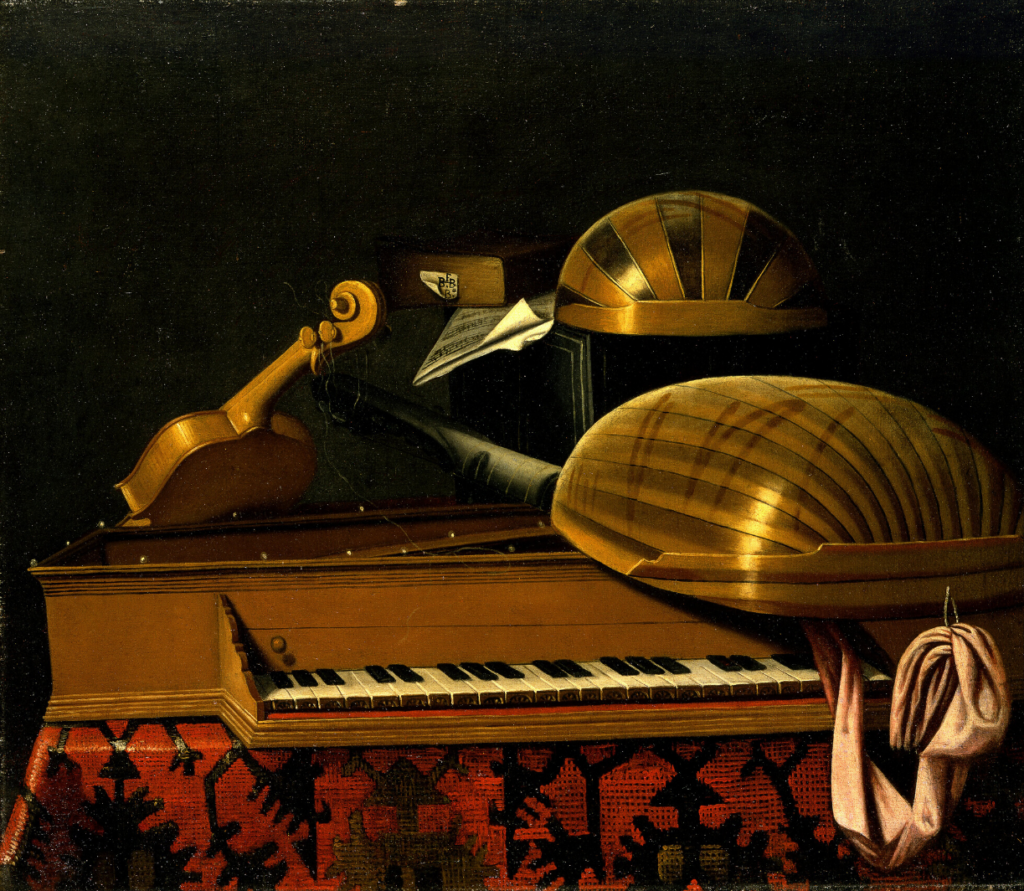
Early Music
“Early music” is both easier and more difficult to define than Baroque music.
Early Music as a Time Frame
“Early music” is easier to define because it traditionally means Baroque music and the musical time periods before it, which are the Renaissance (roughly 1400–1600) and Medieval (loosely anything before the Renaissance but after “classical antiquity” [the times of ancient Rome and ancient Greece]) eras. “Early music” also sometimes includes the Classical period (roughly 1750–1800) of classical music, which came after the Baroque.
Early Music vs. Historical Performance Practice
But “early music” is also more difficult to define because it has become intertwined with what’s known as “historical performance practice,” also called “historically-informed performance” or HIP. Historical performance practice refers to the 20th- and 21st-century movement (sometimes called the “early music movement”) to revive the original instruments and playing techniques used in time periods earlier than our own.
If you want to learn more about the original instruments of the Baroque period–also called “period instruments”–check out our Guide to Baroque Instruments.
The principles of historical performance practice are commonly applied to music from the Classical, Baroque, Renaissance, and Medieval periods. But we can also apply them to music from the Romantic period (approx. 1800-1900) and the 20th century, since those times are also both earlier than our own. In this sense, the 19th and 20th centuries are also sort of “early music,” though the term in general usage doesn’t include them.
So the term “early music” is generally used to mean music from the Baroque (or possibly Classical era) and earlier. “Historical performance practice,” on the other hand, refers more to applying the knowledge we know about “early music” and later eras to actual musical performances.

